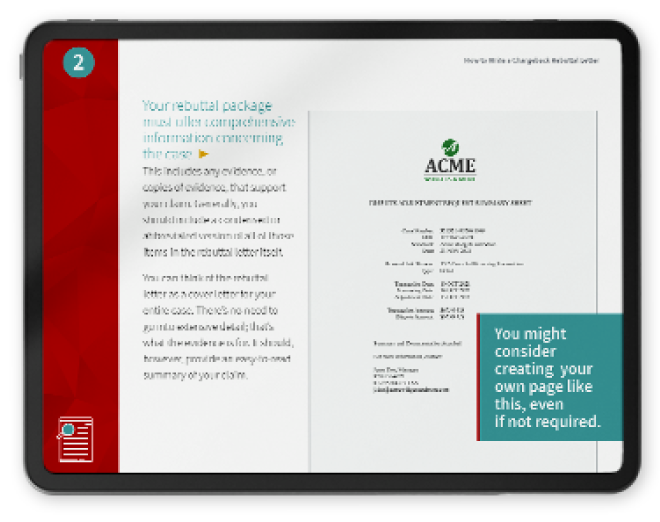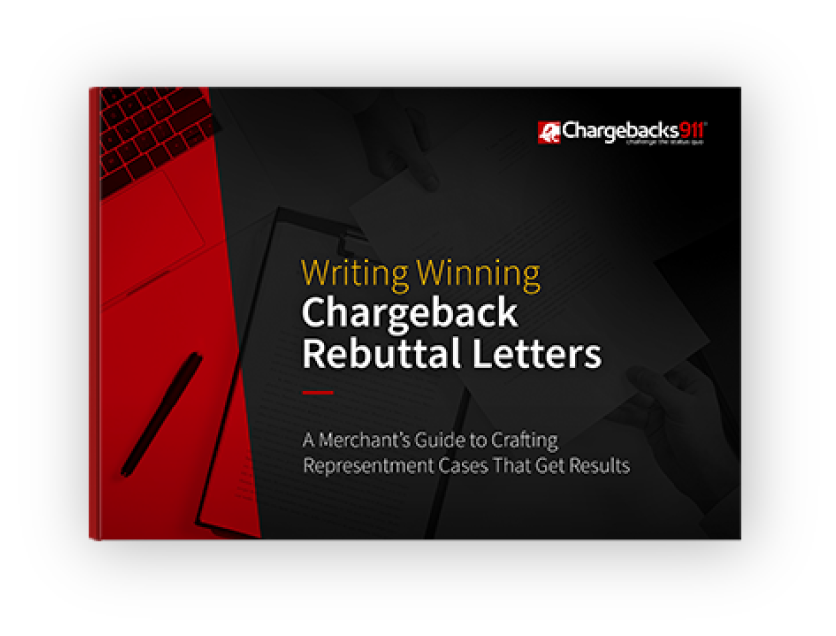Chargeback Laws: What’s the Legal Basis for the Chargeback Process?
You want to do right by your customers. This is especially true when a dispute arises, and you find yourself at odds with a buyer. You both have set rules to follow here. So, it helps to know what the rules are before getting started.
When customers are the victims of payment fraud or deceptive merchant practices, they have the right to file a chargeback. But where does that right come from? Are there credit card chargeback laws on the books guaranteeing consumer protections against fraud?
As a matter of fact, there are.
Chargeback laws date back almost five decades. At that time, credit cards were still a new innovation. Of course, a lot’s changed since the mid-Seventies. So, let’s take a look at the laws governing the chargeback process, and see how they’ve held up over the decades.
Recommended reading
- Understanding Chargeback Fees: How to Reduce Your Costs
- American Express Chargeback Time Limits: The 2025 Guide
- Chargeback Time Limits: the Merchant's Guide for 2025
- Chargeback Police Report | Can You Report Dispute Abuse?
- Is Chargeback Fraud Illegal? Here’s the Simple Truth.
- Here are Your 9 Basic Chargeback Rights as a Merchant
The Beginning: Truth in Lending & Fair Credit Billing
We’ve discussed Section 75 of the Consumer Credit Act on the blog before. However, Section 75 only applies to UK consumers. Here in the US, four critical pieces of federal legislation set the foundation for the chargeback system:
The Truth in Lending Act (TILA)
1968
This law was originally enacted as Title I of the Consumer Credit Protection Act. The original purpose of TILA was to promote the informed use of consumer credit. For example, the act allows consumers to cancel some credit transactions involving a lien on the person’s primary home.
In 1970, legislators expanded the law, prohibiting issuers from sending unsolicited credit cards to consumers. Several other amendments and updates to the act, such as those contained in the 2010 Dodd-Frank Act, passed into law in successive decades.
Learn more about the Truth in Lending ActThe Fair Credit Billing Act (FCBA)
1974
Six years after the original legislation passed, the FCBA came about as an update to TILA. This ruleset helped clarify details of the original legislation–specifically how they pertain to the following:
- Practices tied to credit cards.
- How to provide a means to dispute credit billing.
- How to disclose maximum interest rates in a variable-rate credit contract.
The Electronic Funds Transfer Act (EFTA)
1978
The Electronic Fund Transfer Act (EFTA, sometimes referred to as Regulation E) is a federal mandate aimed at financial institutions requiring banks to provide certain information to customers regarding electronic fund transfers (EFTs). It also regulates how banks respond to consumer complaints and limits liability for lost or stolen debit cards.
The EFTA was first enacted in 1978. It was adopted as a direct response to the increased use of Automated Teller Machines (ATMs). The mandate requires transparency from financial institutions concerning electronic transfers. It also limits consumer liability for unauthorized transactions.
The Act also governs how financial institutions assign liability if a customer’s card is lost or stolen. For merchants, this may be the essential aspect of the mandate.
Learn more about the Electronic Fund Transfer ActThe Credit CARD Act of 2009
2009
Signed into law in May 2009, the Credit Card Accountability Responsibility and Disclosure (CARD) Act — also known as the Credit CARD Act or the Credit Cardholders' Bill of Rights — aimed to “...establish fair and transparent practices relating to the extension of credit under an open end consumer credit plan…”
Specifically, the law established protections for consumer borrowers and imposed fee caps on credit card issuers. The law also placed restrictions on interest rate hikes, reformed unfair billing practices, and limited the extent to which issuers could market credit cards to young adults. In this way, the law fundamentally changed the average cardholder's relationship to credit card use.
Learn more about the Credit CARD Act of 2009Ultimately, the Uniform Commercial Code, or UCC, outlines current chargeback practices.
The UCC aims to standardize the laws governing sales and commercial transactions throughout the US market. This is an important function; the UCC ensures that companies can look to a single, reliable authority for compliance. Otherwise, they’d have to deal with a complicated patchwork of state and territorial laws to conduct interstate commerce. This would be impossible for most businesses to do.
Interpreting the UCC & Chargeback Laws
Currently, the UCC outlines consumers’ credit card chargeback rights under U.C.C. – Article 4 – Bank Deposits and Collections (2002) > Part 2. Collection of Items: Depositary and Collections Banks > § 4-214. Right of Charge-Back or Refund; Liability of Collecting Bank; Return of Item.
This section includes six key paragraphs. Let’s look at each one, see if we can decode the legalese and give some clarification on what it really means.
Paragraph A
If a collecting bank has made provisional settlement with its customer for an item and fails by reason of dishonor, suspension of payments by a bank, or otherwise to receive settlement for the item which is or becomes final, the bank may revoke the settlement given by it, charge back the amount of any credit given for the item to its customer's account, or obtain refund from its customer, whether or not it is able to return the item, if by its midnight deadline or within a longer reasonable time after it learns the facts it returns the item or sends notification of the facts. If the return or notice is delayed beyond the bank's midnight deadline or a longer reasonable time after it learns the facts, the bank may revoke the settlement, charge back the credit, or obtain refund from its customer, but it is liable for any loss resulting from the delay. These rights to revoke, charge back, and obtain refund terminate if and when a settlement for the item received by the bank is or becomes final.
When a customer demands a chargeback, that money isn’t drawn directly from the merchant’s account. Instead, the issuer withdraws the money from the merchant's acquiring bank. In simple terms, Paragraph A says a collecting bank (the acquirer) has the right to withdraw funds from merchants’ accounts to cover chargebacks. So, while the acquirer is initially responsible, they can recover their losses from the merchant. Also, if the bank delays filing, they can still carry out these processes. However, the bank is liable for any additional loss resulting from the delay.
Paragraph B
A collecting bank returns an item when it is sent or delivered to the bank's customer or transferor or pursuant to its instructions.
Under the Index of Definitions in Section 4-214, an “item” refers to “a promise or order to pay money handled by a bank for collection or payment.” Paragraph B outlines what it means for the collecting bank (the acquirer) to “return an item” in the language under Paragraph A.
Paragraph C
A depositary bank that is also the payor may charge back the amount of an item to its customer's account or obtain refund in accordance with the section governing return of an item received by a payor bank for credit on its books (Section 4-301).
Paragraph C of the credit card chargeback laws gives the payor bank (the issuer) the right to transfer funds recovered through a chargeback to the cardholder’s account.
Paragraph D
The right to charge back is not affected by:
- (1) previous use of a credit given for the item; or
- (2) failure by any bank to exercise ordinary care with respect to the item, but a bank so failing remains liable.
Paragraph D outlines two specific conditions that won’t affect the right to a dispute under credit card chargeback laws. Subsection 1 says, even if a source of credit has been used before for an item (in which “item” describes the order to pay money handled by a bank), it is still eligible for a chargeback. Under Subsection 2, chargeback rights are also not affected by the bank’s mishandling of an item.
Paragraph E
A failure to charge back or claim refund does not affect other rights of the bank against the customer or any other party.
In this section of the chargeback laws, we see that even if an acquirer is unable to overturn a chargeback and cannot recover funds from the merchant, this does not invalidate any other rights possessed by the bank.
Paragraph F
If credit is given in dollars as the equivalent of the value of an item payable in foreign money, the dollar amount of any charge-back or refund must be calculated on the basis of the bank-offered spot rate for the foreign money prevailing on the day when the person entitled to the charge-back or refund learns that it will not receive payment in ordinary course.
Paragraph F details how to conduct a chargeback involving foreign currency. The bank calculates the exchange rate based on the currency's value at the moment of the quote.
Chargeback Laws are Just One Part of the Equation
State and federal legislation aren’t the only texts that govern chargebacks. Payment networks also have published rules that offer guidance on managing chargebacks.
Visa’s 63-page Dispute Management Guidelines for Visa Merchants, for instance, was last updated in June 2024 and outlines the dispute resolution process for a transaction processed through the company’s network.
The Mastercard Chargeback Guide Merchant Edition, most recently updated in April 2024, is even longer. Within the 422-page document are procedures for responding to arbitration and compliance chargebacks, as well as information on chargeback reason codes.
Why bring this up in an article about chargeback laws? We wanted to highlight the fact that there are multiple layers of authority and compliance that need to be considered here. It’s hard to parse the dense layers of rules and regulations.
At the same time, the complexity makes it easy for bad actors to abuse processes and leverage them to commit fraud. Others, simply unable to understand the rules, accidentally cause tens of billions dollars in losses every year due to friendly fraud. The chargeback laws, as they exist, are vital consumer protections, but they're in desperate need of an update to bring them in line with the realities of the digital marketplace.
Better Compliance. Better Results.
Being familiar with chargeback laws and the industry rules that govern disputes can help you stay in compliance, ward off fraudulent chargebacks, and safeguard your revenue.
But, these government laws and industry guidelines are complex. Acquainting yourself with the history, changes, and developments in these pronouncements is a time-consuming process that diverts critical time and attention away from what you do best: running your business.
That’s where Chargebacks911® comes in.
Founded and led by former merchants, we’ve developed the only end-to-end chargeback management platform on the market today. Whether you’re an SMB looking for an affordable, software-based solution or a multinational enterprise looking for a highly-tailored, fully-outsourced chargeback prevention and recovery system, we’re here to help.
FAQs
What is the US law on chargebacks?
US laws on chargebacks include The Truth in Lending Act (TILA) of 1968, the The Fair Credit Billing Act (FCBA) of 1974, and The Electronic Funds Transfer Act (EFTA) of 1978. Section 4-214 of the Uniform Commercial Code (UCC) also outlines chargeback rights and practices.
What are the consumer rights of chargebacks?
Consumers can dispute merchant billing errors and unauthorized or fraudulent transactions. Consumers also have the right to dispute a charge if they received goods or services that were defective or missing, or if the goods in question were delayed.
How long after a purchase can you do a chargeback?
Consumers typically have at least 120 days to initiate a chargeback against merchant billing errors or fraudulent transactions. In certain instances, chargebacks can be initiated up to 540 days subsequent to the transaction date.
What is the 540 day chargeback rule?
Cardholders who use Visa-branded credit or debit cards have, in certain instances where goods are services are not delivered, up to 540 days to file a chargeback. In most cases, however, consumers must file a dispute with their issuing bank within 120 days of the transaction date.
What makes a chargeback invalid?
Chargebacks are invalid if they are filed after the deadline or if they violate issuing bank dispute policies. Chargebacks are also invalid if they are filed for illegitimate or malicious reasons, like buyer’s remorse.
















